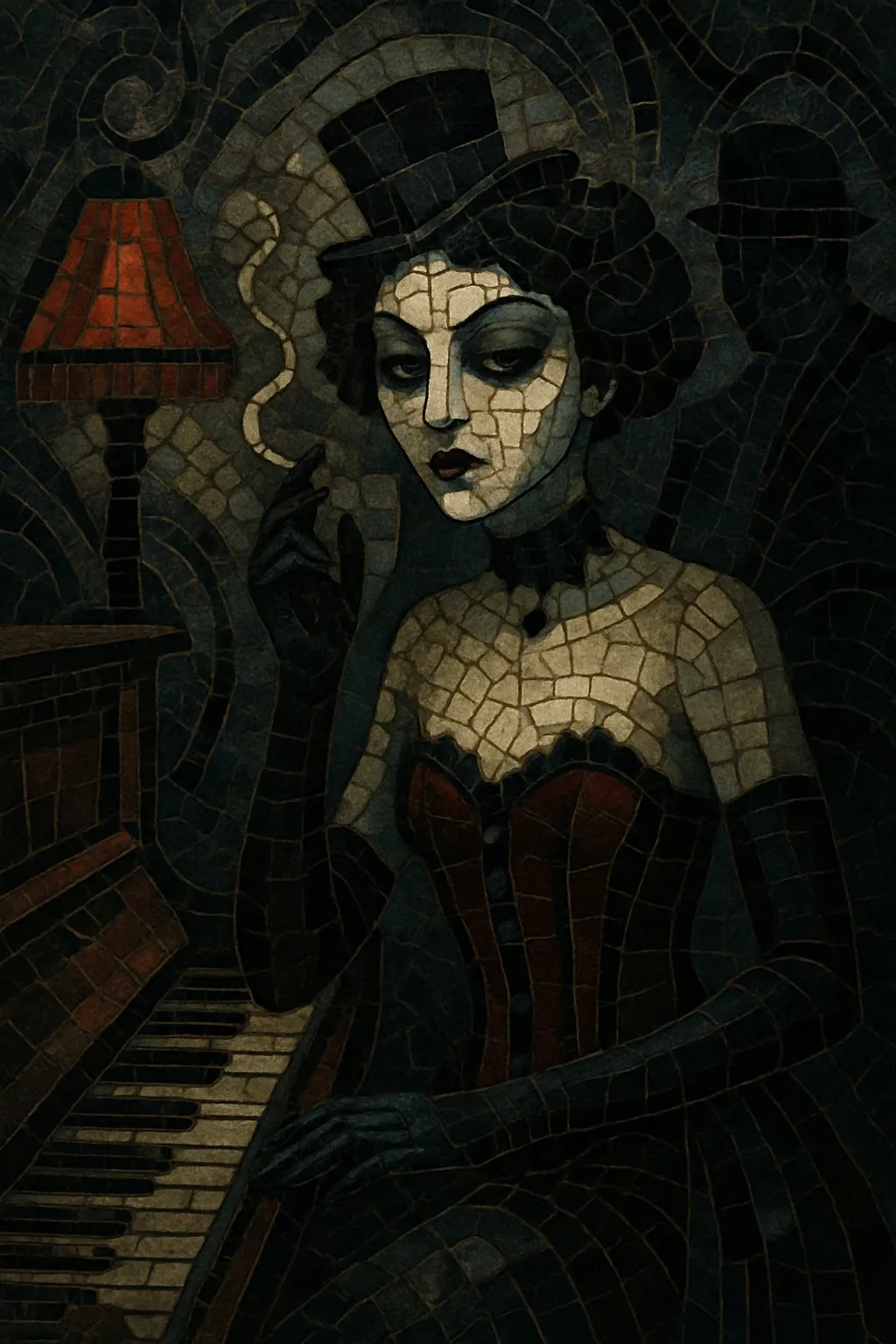
Dark cabaret is a theatrical, macabre-tinged revival of early 20th‑century cabaret filtered through post‑punk and goth sensibilities. It embraces piano‑led or accordion‑driven songwriting, minor‑key harmonies, and stylized storytelling that draws on Weimar‑era satire, black humor, and noir imagery.
Performances are as central as the songs: vocal delivery tends to be expressive and characterful, arrangements are chamber‑like (strings, woodwinds, percussion), and shows often incorporate burlesque, sideshow, and vaudeville aesthetics. Lyrically, dark cabaret juxtaposes romance and ruin, tragedy and farce, exploring themes like decadence, crime, obsession, and the grotesque with a wink and a knife‑edge.
Dark cabaret’s DNA reaches back to European cabaret and German Kabarett of the early 20th century, where satirical songs, political bite, and smoky nightclub ambience converged. The spirit of Brecht/Weill theater, French chanson réaliste, vaudeville, and music hall provided the template: intimate stages, character‑driven narratives, and sly social critique.
In the 1990s, a handful of artists began fusing those pre‑war cabaret tropes with post‑punk and goth atmospheres. The Tiger Lillies (UK, formed 1989) became a touchstone with falsetto grotesquerie, accordion, and Weill‑like harmonies, signaling a modern, darker cabaret idiom. Underground American acts and burlesque revivals laid further groundwork for a scene that valued theatricality as much as sound.
The term “dark cabaret” circulated widely in the early 2000s alongside the rise of The Dresden Dolls, whose self‑described “Brechtian punk cabaret” paired piano‑driven melodrama with punk urgency. Parallel figures—Jill Tracy, Emilie Autumn, Rasputina, and The World/Inferno Friendship Society—expanded the palette, adding gothic chamber textures, waltzes and tangos, and literary, noir‑leaning lyrics. DIY touring, cabaret nights, and online communities helped knit a transatlantic network.
Through the 2010s, dark cabaret became a recognizable niche intersecting with burlesque, circus arts, and steampunk culture. International acts (from the US, UK, and continental Europe) blended klezmer, tango, and classical influences with modern indie and goth production. While still subcultural, the style’s theatrical approach and intimate instrumentation have influenced festival stages, multimedia performances, and concept‑driven pop and rock projects.

